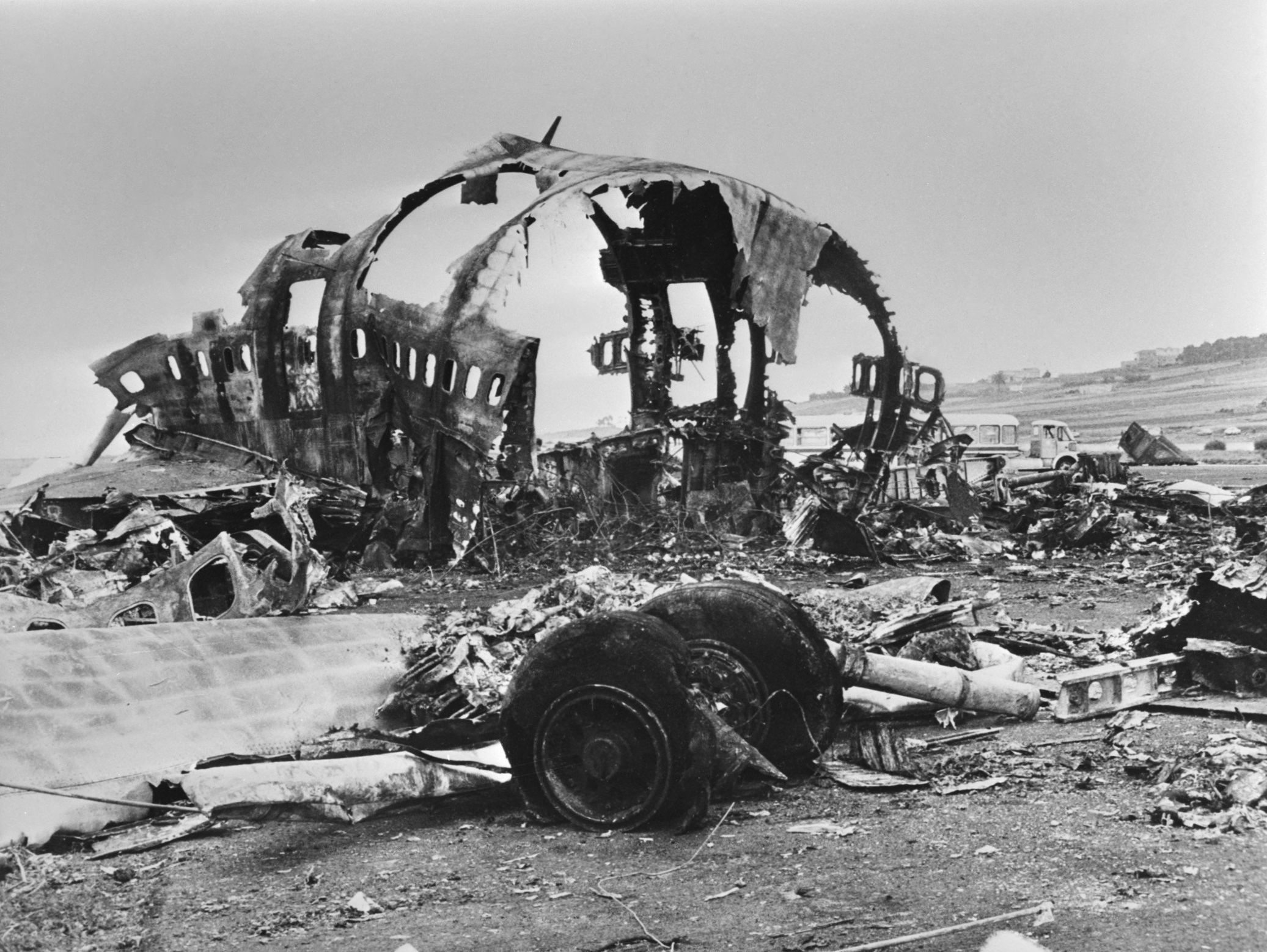On March 27, 1977, the most shocking and deadliest air disaster happened, changing the aviation world forever. At Tenerife's Los Rodeos Airport, a KLM Boeing 747 initiated takeoff without air traffic control clearance and smashed into a Pan Am 747 waiting on the runway, resulting in 583 fatalities. No one aboard the KLM aircraft survived, and only 71 people escaped from the Pan Am wreckage. Sixty-one of them survived, including some of the flight attendants - here, we take a look at their story.
Pre-flight
Francoise Colbert de Beaulieu was the Senior Purser that fateful day and asked to swap places with Purser Dorothy Kelly, who was working at the rear of the aircraft. She was worried about reading the public announcements because of her French accent, so she moved Dorothy to first class instead, which unknowingly saved Dorothy's life. Pan Am 1736 flew from Los Angeles to Gran Canaria to take the passengers to join a Mediterranean cruise.
The diversion
Unfortunately, due to reports of suspected bombs found at Las Palmas Airport, aircraft were instead diverted to Los Rodeos Airport, and the airport struggled to cope with the additional traffic. Thick fog started to envelop the airport as Pan Am 1736 was ready to leave.
However, KLM 4805 was blocking the runway while being refueled. Eventually, KLM 4805 was ready to leave, and the captain decided to start take-off, but because of the fog didn't see Pan Am 1736. The Pan Am flight crew only saw the aircraft approaching them when it was too late.
Get the latest aviation news straight to your inbox: Sign up for our newsletters today.
What happened next
Dorothy was standing at door one, right at the front of the aircraft, drinking coffee with two other crew members, Carla Johnson and Miguel Torrech. Suddenly, things were flying around the aircraft in slow motion, and nothing was like a second before. Dorothy was hit on the head by aircraft debris and forced through the cabin floor into the cargo bay. Although dazed, she saw a small light above her and climbed towards the opening. She saw two passengers and started to shout her commands to get out of the aircraft.
Unfortunately, the exit doors were jammed, and she could not evacuate but found some open fuselage. Fire was progressing rapidly through the aircraft, so she shouted at passengers to jump out. If they refused, she pushed them out of the burning wreck, realizing the severity of the situation. She finally found herself outside the aircraft and realized she had a head wound.
The aftermath
Dorothy did not stop. Many passengers were elderly and dazed by what had happened, some not moving at all. She dragged some away from the burning aircraft and instructed them to keep back. She saw the captain lying on the ground and pulled him away from the aircraft just before an engine exploded. A severely injured woman was lying under a wing, trampled on by passengers trying to get out of the aircraft. Dorothy pulled her to safety.
Captain Victor Grubbs and first officer Robert Bragg (who suffered a broken ankle), and Dorothy continued to look for passengers still onboard. They helped the badly injured survivors until the emergency services could reach them. Carla was also found shouting commands and helping the survivors. Suzanne Donovan and Joan Jackson also survived and crawled through the twisted cabin looking for passengers after the floor collapsed. Nine flight attendants on Pan Am 1736 died.
Get all the latest aviation news right here on Simple Flying.
At the hospital
Dorothy refused immediate treatment for her head wound and offered to help the medics attending to the burns victims. It was only then she realized she'd also broken her arm. In the coming days, Robert, Dorothy, and Carla continued to visit the passengers at the hospital. Dorothy declared that the main task of an attendant is to get passengers off the aircraft and to their destination as safely as can be.
Experienced support in other disasters
Dorothy Kelly continued to fly after the Tenerife Disaster and, due to her experience, was called upon to offer support to grieving families during Pan Am 103 at Lockerbie and also during the 9/11 attacks.
In an interview with the Pan Am Podcast in March 2022, Dorothy highlighted that the Tenerife incident made her even more aware of how important her training was. It also made her less tolerant of passengers "who only wanted a pretty face to serve them a drink or meal." She concluded that it's always crucial to take the job seriously.
She shared the following in the interview with the Pan Am Podcast:
"I hope that the remaining employees of Pan Am and friends of Pan Am still keep together. I belong to a philanthropic group of former Pan Am flight attendants called World Wings, and there are chapters all over the world. We get together for each chapter locally for meetings and parties and social gatherings. We also collect money for charities and have donated lots of money to different charities around the world. I'm very much a big part of-- always been a big part of World Wings."
Flight attendants have continued to rise to the occasion amid several other tragic incidents in the skies over the decades. The Tenerife Disaster is a key reminder to follow their lead.
What are your thoughts about this tragedy in 1977? How do you feel about the event from a cabin crew perspective? Let us know what you think in the comment section.
Source: The Pan Am Museum


-1.jpg)
.jpg)